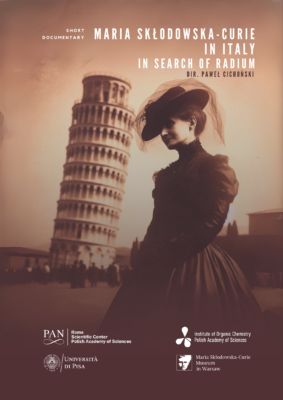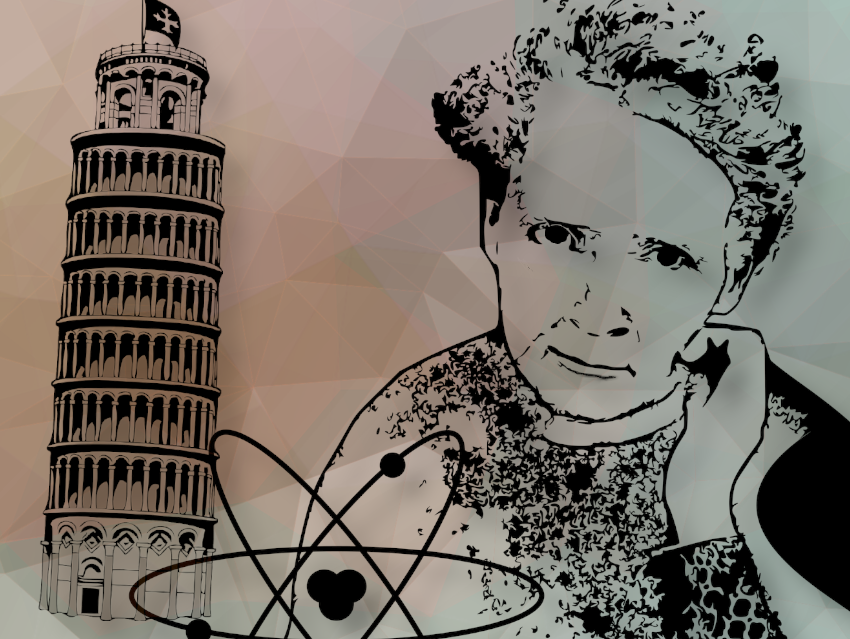Most Influential Woman in History
We all know Marie Curie, the first woman to receive the Nobel Prize, the first person to win a Nobel Prize twice, and the only person to win a Nobel Prize in two scientific fields. As we also all know, she was born in 1867 in Warsaw, Poland, and eventually moved to Paris to continue her studies due to restrictions on women’s education in Poland. Marie Curie and her husband, Pierre Curie, discovered polonium and radium in 1898. In 1903, they won together with Henri Becquerel the Nobel Prize for Physics for discovering radioactivity. In 1911, Marie Curie won the Nobel Prize for Chemistry for isolating pure radium.
Little-Known Episode
What we probably do not know is that in 1918 she has spent three weeks in Italy on a research tour. Her stay in Italy was driven by her need to find new sources of radium for medical and scientific purposes, particularly due to shortages in France caused by World War I. She traveled extensively throughout Tuscany, southern and northern Italy, visiting several locations known for their thermal springs and mineral deposits, including Pisa, Tuscany, the island of Ischia, and Montecatini, to investigate their radioactivity levels.
 During her visit, Marie Curie collaborated with prominent Italian scientists like Professor Rafaelo Nasini and his assistant, Camilo Porlezza from the University of Pisa. It was here that she began her journey. Her research confirmed the presence of significant radioactive elements in these areas, particularly radium, and her findings helped improve the understanding and extraction techniques for these elements. Throughout her tour, Marie Curie was accompanied by Italian chemists, including Camillo Porlezza, who helped her navigate and collect data across the challenging terrain.
During her visit, Marie Curie collaborated with prominent Italian scientists like Professor Rafaelo Nasini and his assistant, Camilo Porlezza from the University of Pisa. It was here that she began her journey. Her research confirmed the presence of significant radioactive elements in these areas, particularly radium, and her findings helped improve the understanding and extraction techniques for these elements. Throughout her tour, Marie Curie was accompanied by Italian chemists, including Camillo Porlezza, who helped her navigate and collect data across the challenging terrain.
For example, they discovered that the thermal waters of Ischia are radioactive, with radon being the most important therapeutic element. At the time, radon was thought to have beneficial health properties and was often added to consumer products such as toothpaste, hair creams, and even food, but the radioactivity levels are low and harmless, as they can be stopped by a sheet of paper and do not bioaccumulate due to radon’s short half-life.
Marie Curie’s research trip was instrumental in the creation of the Italian National Commission for Radioactive Substances in 1919 and strengthened scientific cooperation between Italy and France. Her work facilitated progress in the practical uses of radioactivity, particularly in medical treatments, and underscored the importance of international collaboration in scientific research.
Polish-Italian Documentary Film
The Polish Academy of Sciences and the University of Pisa, Italy, have now jointly produced a documentary film, “Marie Skłodowska-Curie in Italy in Search of Radium,” which describes Marie Curie’s little-known three-week stay in Italy in summer 1918.
The film explores questions such as How did the research trip take place during World War I, a difficult time for Europe? What places did the Nobel Prize winner visit? Was the scientist also interested in sightseeing in Italy? How is Marie Curie remembered in Italy today? You will also learn about M.me Curie’s dedication and meticulous care for instrumentation and accuracy of measurements.
“Today, it may seem surprising that a two-time Nobel laureate was directly involved in a series of hard measurements in the field.”, said Lorenzo Di Bari, Professor at the University of Pisa. In addition, the film includes original excerpts from Porlezza’s screenplay, written 20 years after the trip and never before published in English.
“We believe that the film presented has educational value, as it also discusses the basics of natural radioactivity and the discovery of polonium and radium – two chemical elements whose understanding marked a milestone in the history of science,” added Marcin Górecki, Professor at the Institute of Organic Chemistry at the Polish Academy of Sciences, Warsaw, Poland, and Chemistry Europe Fellow. “Since the premiere, we have received very positive feedback from both Polish and Italian audiences.”
Watch the video “Marie Skłodowska-Curie in Italy in Search of Radium” on YouTube
Also of Interest

Every day until December 24 we will unlock a new destination for your bucket list—join our chemistry Europe trip—which includes the Maria Skłodowska-Curie Museum in Warsaw, Poland, and the Musée Curie in Paris, France

Starting from the early alchemists we take a journey through time to examine how each of these chemists pushed the boundaries of what is possible





A small correction. Marie Curie is not the only person two have won Nobel prizes in two unrelated fields. She is one of two. Linus Pauling won for chemistry (1954) and for peace (1962).
Thank you for your comment. You are right; in addition, Linus Pauling is the only person to have been awarded two unshared Nobel Prizes.